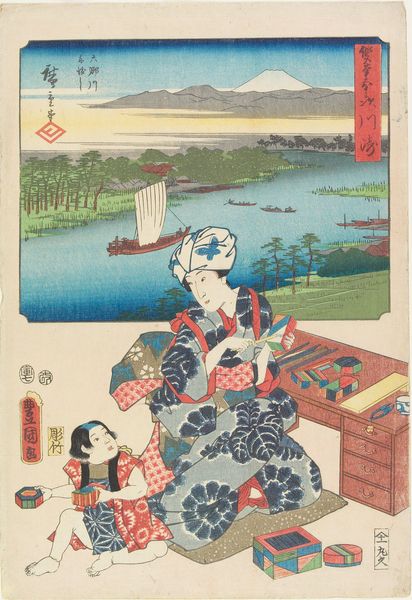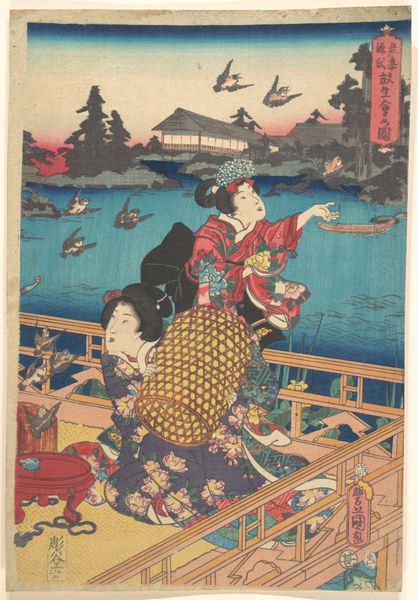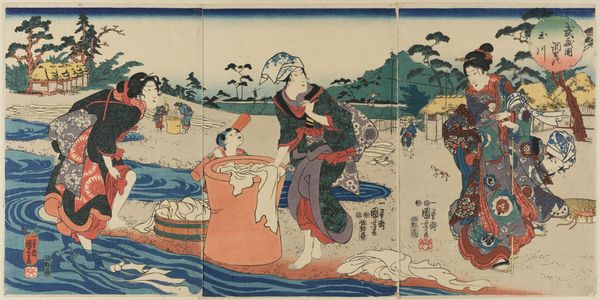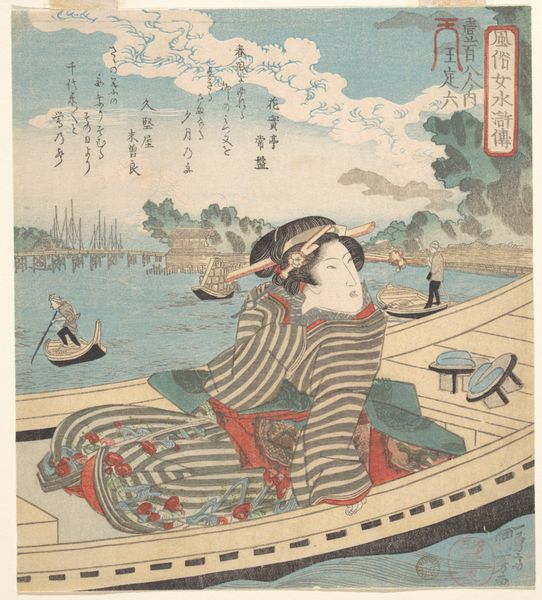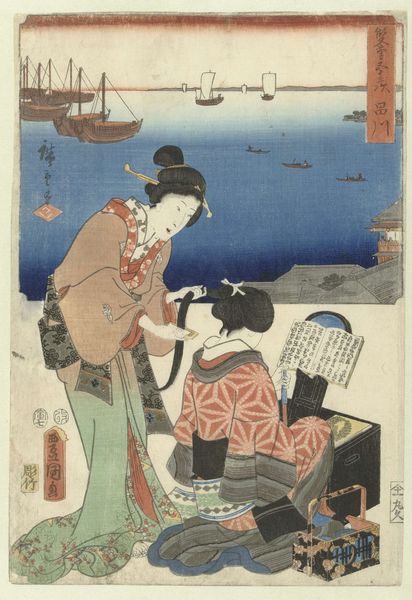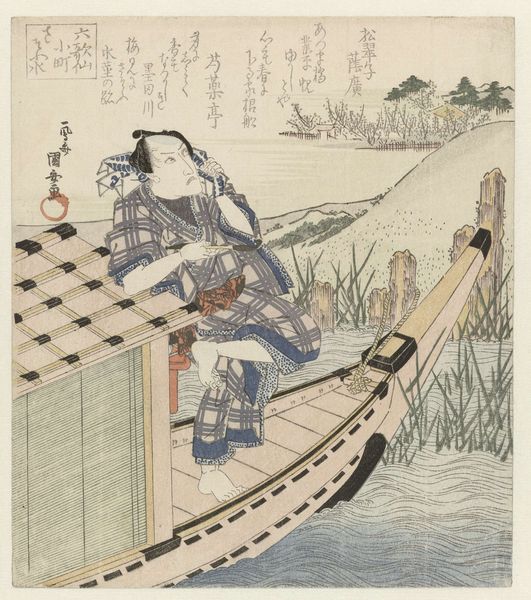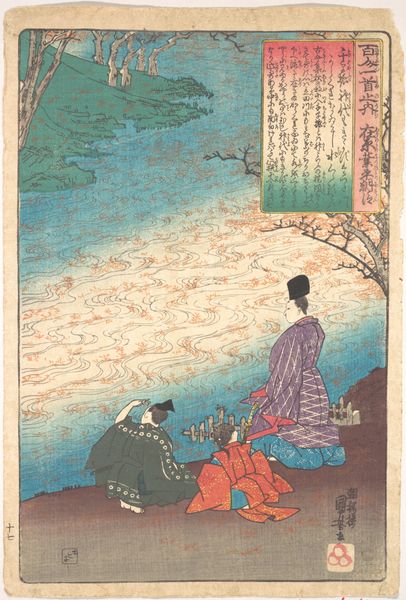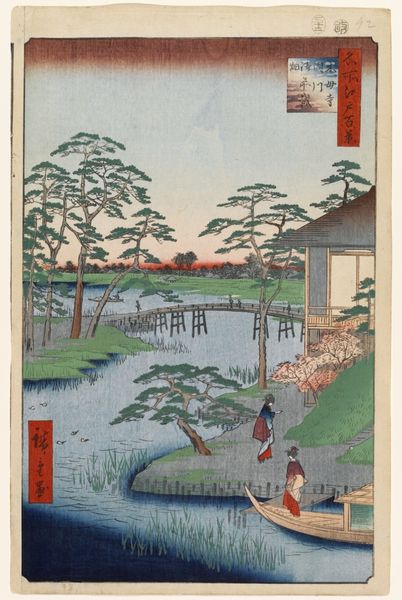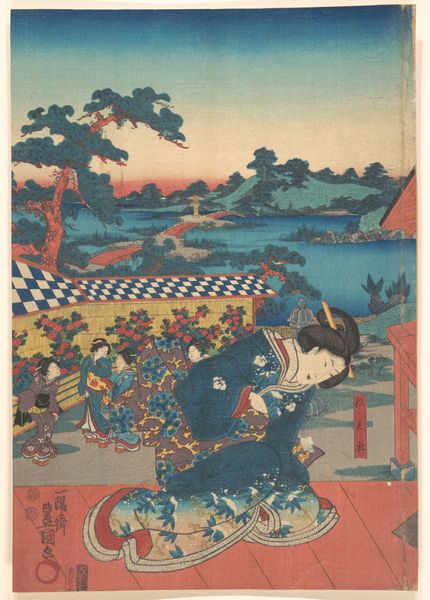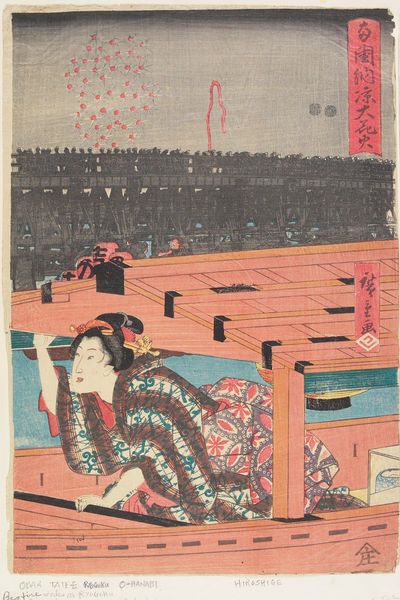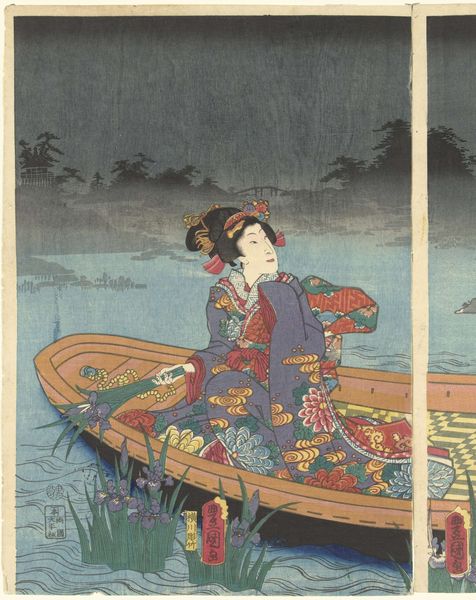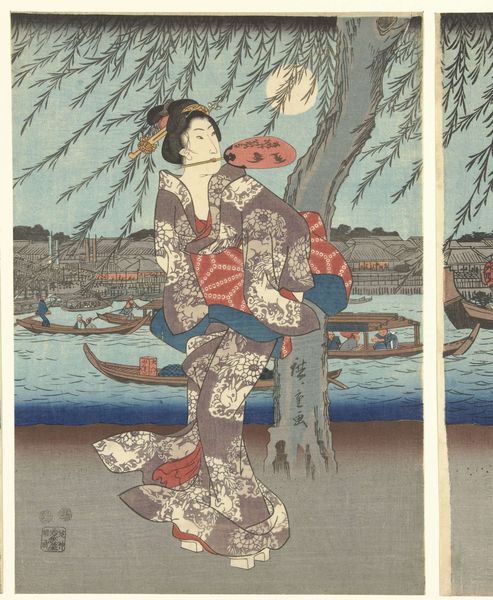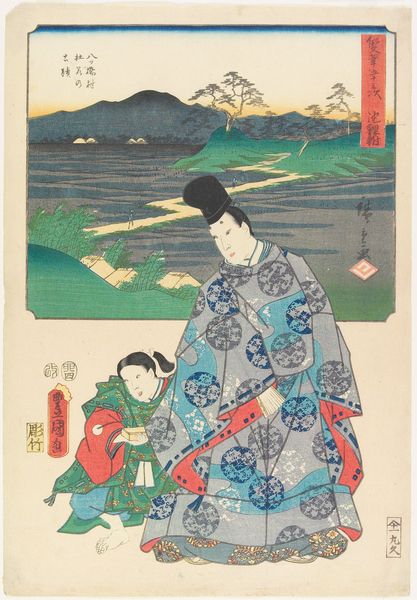
print, woodblock-print
#
portrait
#
mother
# print
#
asian-art
#
landscape
#
ukiyo-e
#
figuration
#
woodblock-print
#
genre-painting
Dimensions: height 348 mm, width 240 mm
Copyright: Rijks Museum: Open Domain
Curator: This is “Kawasaki,” a woodblock print crafted in 1854 by Utagawa Kunisada, currently residing here at the Rijksmuseum. What are your initial thoughts on this piece? Editor: A domestic tableau. A woman and child absorbed in what looks like crafting little boxes. The atmosphere feels very calm, almost meditative. The landscape in the background adds depth, but the focus remains firmly on these figures. Curator: Absolutely. Consider the historical context: Kunisada was working within the Ukiyo-e tradition, which flourished during the Edo period. This piece offers a window into the daily life of commoners, though with Kunisada's characteristic artistic license and his commercial appeal to contemporary Kabuki fans. These boxes may be a form of piecework, reflecting women's economic roles and how art became integral to market exchange. What cultural forces do you see in play here? Editor: There is the idealization of motherhood that’s interwoven into the imagery. But looking at this mother, how does she manage the labouring of creation in a patriarchal context? Also the landscape framing—does it function to set this familial scene in harmony with nature, but simultaneously render her more static, complicit even? It is through Ukiyo-e that this narrative can then gain such commercial prominence within Japanese culture. Curator: I appreciate your interpretation on the maternal imagery and the context in which it is represented! We cannot remove the commercial interests from Ukiyo-e. Look closer at the composition and technique, though. The flat planes of color, the strong outlines—they were typical of woodblock printing. What is conveyed through these stylized artistic features? Editor: This flatness, particularly coupled with that vantage point looking over Kawasaki is an important design. The viewer is invited in to consider themselves positioned with some level of authority, and there is definitely a potential dialogue to be opened to reflect on how Ukiyo-e and orientalism intersect in this instance. However, returning to these small boxes as sites of potential labour - I consider who has access to creative expression here and how Ukiyo-e shapes our understanding of female identity within Japan? Curator: Fascinating points! That positionality does add to the understanding of Japanese history and visual representation. Ultimately, “Kawasaki,” offers us a layered perspective, reminding us of art's unique capability to immortalize intimate, personal interactions and reveal subtle commentaries on cultural expectations. Editor: Indeed. By examining the artistry of Utagawa Kunisada, the setting, and the details of these objects and actions in a complex social frame, we see “Kawasaki” provides a bridge into deeper and enduring cultural reflections and perhaps some important discourse on labour.
Comments
No comments
Be the first to comment and join the conversation on the ultimate creative platform.
